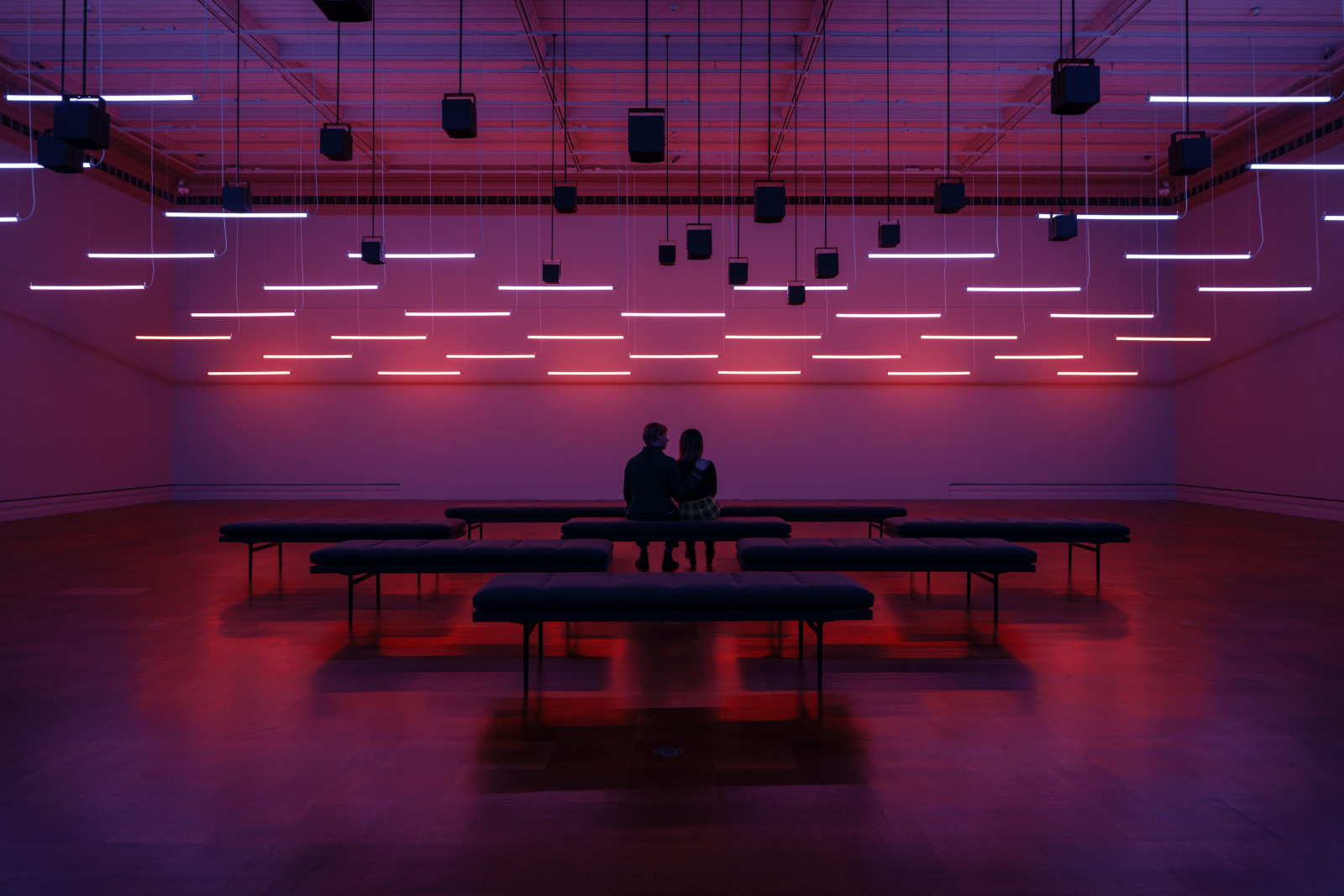Torso of a Bodhisattva
Torso of a Bodhisattva
Place of OriginIndia
DateGupta Period (320-647), about 600
DimensionsH: 40 3/16 in. (102.1 cm); W: 18 3/16 in. (46.2 cm); Depth: 12 in. (30.5 cm)
MediumSandstone
ClassificationSculpture
Credit LineGift of Thomas T. Solley
Object number
1991.51
Not on View
DescriptionThis is a fragmentary, life-size sandstone sculpture of a male torso. The head, arms, and lower legs are missing. The figure stands in a pronounced triple-bend (tribhanga) pose, with the hip thrust outward. It is adorned with layered necklaces, an armband on the remaining upper portion of the left arm, and a sacred thread (yajnopavita) draped from the left shoulder. A detailed belt secures a diaphanous lower garment (dhoti), which clings to the body and reveals the contours of the legs.
Label TextA bodhisattva is a divine Buddhist being who has decided to stay on earth to help all living things reach salvation and paradise. Images of bodhisattvas are similar to those of Buddha, but they wear luxurious jewelry and elaborate headdresses. Gupta artists of India established the standard repertoire of Buddhist images. The fullness of the torso in this fragmentary sculpture exemplifies prana (literally, in-breath), a concept of cosmic life force adapted from Hinduism. It represents the spiritual as well as physical well-being of the deity.Comparative ReferencesSee also Pal, Pratapatiya, The Sensuous Immortals, Cambridge, 1978, pp. 38-43.
cf. Chandra, Pramod, The Scultpure of India, Washington, D.C., 1985, pp. 68, 76, 94.
early 12th century
5th Dynasty (2498–2345 BCE)
21st–31st Dynasties (1069–332 BCE) or Ptolemaic Period (332–30 BCE)
New Kingdom Period
18th Dynasty (1550-1292 BCE), about 1350 BCE
Before 1880
Ptolemaic Period (332–30 BCE), about 246–222 BCE
750-650 BCE
c. 2nd century CE
Early 1st millennium BCE
mid-2nd to early 3rd century CE (Severan?)
about 1100-1200

Membership
Become a TMA member today
Support TMA
Help support the TMA mission














